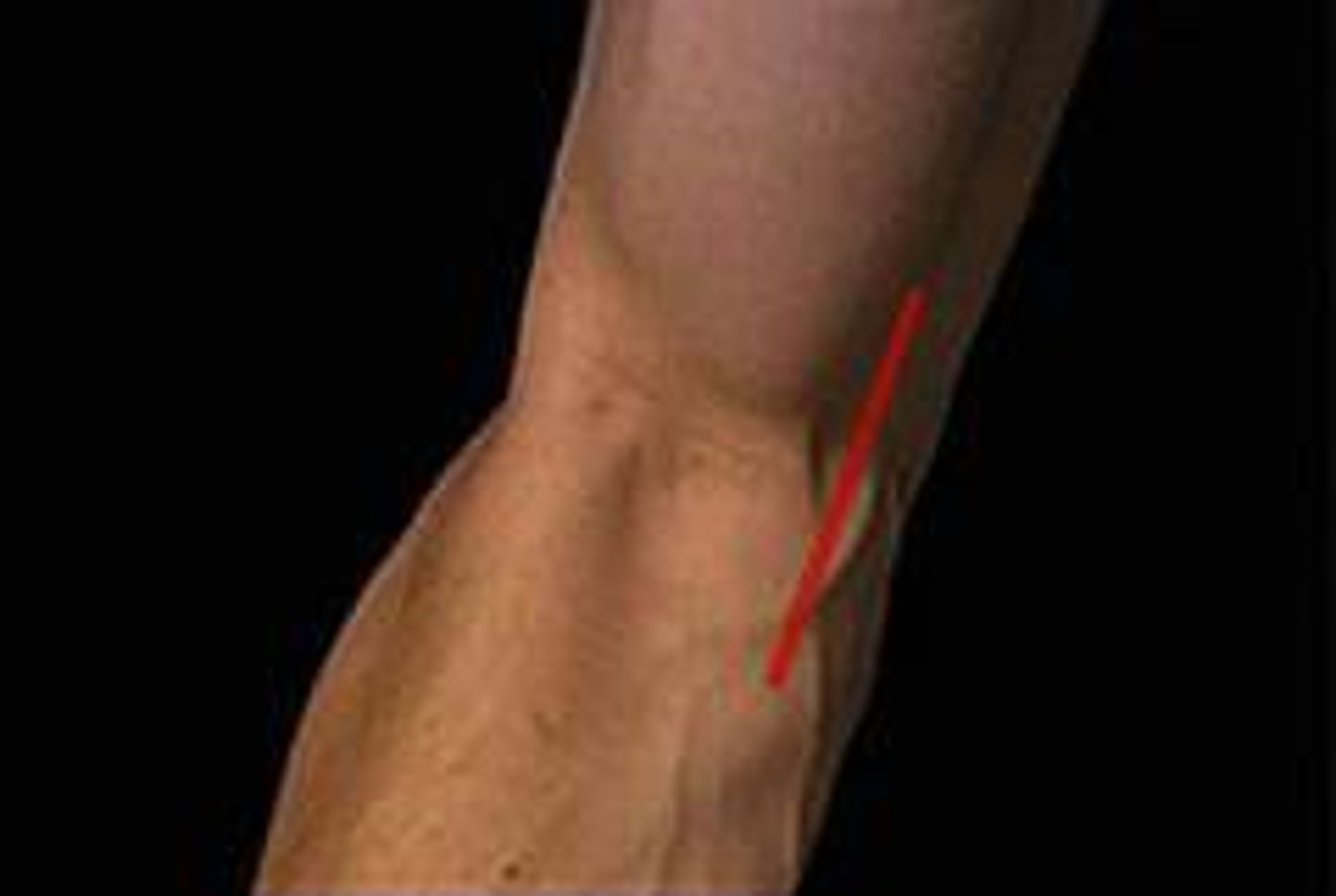!! PNUR 103 Vitals & HeadToToe Assess
1/25
There's no tags or description
Looks like no tags are added yet.
Name | Mastery | Learn | Test | Matching | Spaced |
|---|
No study sessions yet.
26 Terms
Skin inspection and palpation includes assessment for:
A. Color,
B. Skin lesions
C. Skin temperature
D. All of the above
D. All
Normal range for pulse is?
60-100
Normal range for diastolic is?
60-90 MM Hg
Normal range of respirations for an adult would be
12-20 breaths/min
Normal range for systolic is?
100-140 MM Hg
which of the following is normal temp range for adults
97 to 98.8 F
The apical pulse is located
apex of the heart

apical pulse is counted
on left side just below the nipple, one full minute
Where is the brachial pulse located
inside of the elbow at the antecubital space.

dyspnea refers to:
difficulty breathing
Crackles, Rhonchi, wheezes, and Stridor are all examples of
abnormal lung sounds
Where is the S1 and S2 heard equally?
Erb's point
What does PERRLA stand for?
pupils equal, round, reactive to light and accommodation
which are the best places to check the skin turgor?
forearm and sternum
In which position should the patient be placed in order to palpate the popliteal pulse?`
Have the patient lie prone with the knee flexed.
What is a depression that is left after pressing a finger or thumb on swollen tissue called?
Pitting edema
Normal capillary refil is less than 3 seconds and is assessed by:
Pressing on the nail bed until it blanches, and observing how quickly full
When should you check the patient''s blood pressure to assess for orthostatic hypotension
While the patient is laying, sitting and standing
Which structures are in a complete assessment of the mouth?
Lips, mucosa, and gums, teeth or dentures, tongue and floor of the mouth
Which term tells us about a person's movement
Range of Motion (ROM)
To palpate means to "feel" the patient in a light, moderate, or deep touch
true
All body systems should have the inspection technique of assessment
true
which body system requires assessment techniques in the following manner: inspect, auscultate, palpate, percuss
gastrointestinal
Symptoms refer to subjective indications of illness
true
signs refers to subjective indications of illness
false
Cardinal signs of infection and inflammations are
warmth, erythema, edema.